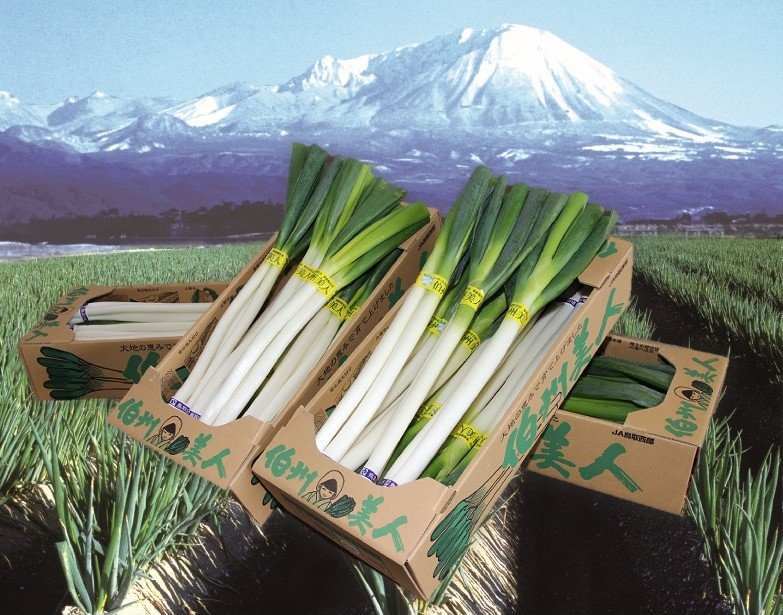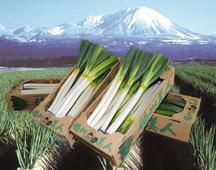Hakusyu Bijin
| Registration Number | 153 |
|---|---|
| Name of the GI | Hakusyu Bijin |
| Class | Vegetables/ Cereal grains/Pulses |
| Date of Protection | 2024/08/27 |
| Producing Area |
Tottori Prefecture
Tottori Prefecture Yonago City, Sakaiminato City and nearby areas at the foot of Mt. Daisen (Hiezu Village, Nanbu Town, Hoki Town and Daisen Town, Saihaku County, and Nichinan Town, Hino Town and Kofu Town, Hino County, Tottori Prefecture) |
| Applicant - Name and Address | JA Tottori-Seibu 1-5-6 Higashifukubara, Yonago City, Tottori Prefecture https://www.ja-Tottori-Seibu.or.jp |
"Hakushu Bijin" is a "negi (long white onion)" with a thick and soft white stalk, which gives a sweet flavor and melting texture when it is cooked.
In the producing area, where long white onions are shipped throughout the year, the season of Hakushu Bijin shipment is limited.
Hakushu Bijin is highly recognized by consumers as a brand of excellent taste and is traded at higher prices compared to regular long white onions.
Hakushu Bijin is cultivated using a variety specified by JA Tottori-Seibu and referring to the cultivation methods specified by Hakushu Bijin Kenkyukai.
The long white onions are sorted and shipped based on the shipment standards specified by the Kenkyukai.
The history of long white onion production in the area is believed to have started near Yonago City around the Mid-Meiji period (1). As the sandy soil is suitable for the cultivation of long white onions, the cultivation area has expanded. In the 1970s, farmers started to grow the onions not only on the sandy fields but also at the foot of Mt. Daisen (2) in the western part of the prefecture.
The area has grown into a significant producing area of long white onions cultivated over 260ha of land. A year-round shipment system has been established by consecutively shipping spring onions, summer onions, and autumn-winter onions. Among them, Hakushu Bijin is an original variety of Tottori Prefecture that was bred by improving native cultivars and is shipped only during winter.
The variety was created by focusing on better taste than conventionally grown varieties and aiming at fast thickening and soft stalks. To respond to the needs of consuming areas, the breed has undergone repeated improvements in growth under high temperatures, leaf color, mesophyll thickness, durability, etc. Besides the variety of characteristics, producers are using the area's natural conditions, such as fertile soil and cold winters, and performing careful fertility management and special cultivation, such as shipping only during winter when the onions become sweet. As a result, the mean sugar content of shipped "Hakushu Bijin" is at least 8°Bx. During the coldest season, the sugar content may exceed 10°Bx. The sweetness of the "Hakushu Bijin" that is cooked is also highly recognized by buyers.
- Meiji era: An era of Japanese history extending from 1868 to 1912, during which Japan shifted from feudalism under the Shogunate to a modernized nation state.
- Daisen: With an altitude of 1,729m, Mt. Daisen is the highest peak in the Chugoku region and a symbol of Tottori Prefecture and is included among the "100 Famous Japanese Mountains" and the "100 Landscapes of Japan". The mountain and environs are designated as Daisen-Oki National Park, where visitors can enjoy mountain climbing and so on.



